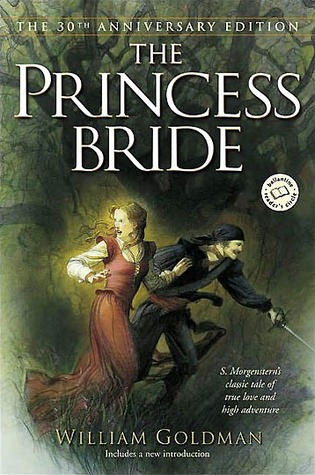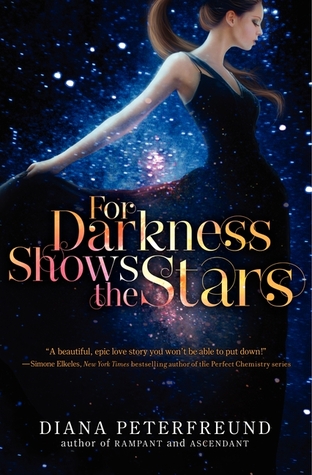This post was inspired by a Goodreads list - Children’s Fiction with Positive Images of Disability.
I’ve been looking into books about mental illness and disability lately and this list really intrigued me. It’s difficult enough to find adult fiction that portrays disabilities in an interesting, unique, and positive way, so I was curious as to what children’s fiction would offer. The list both surprised and delighted me. As I write this, there are more than 85 books suggested - which is a pretty substantial amount for any interested young readers.
My post today is entirely based off of this Goodreads list - books I’ve read from it, my thoughts and feelings about the list, and if I’d recommend the books on it. All descriptions are taken from Goodreads. The comments and thoughts are my own.
Top Book
- Rules by Cynthia Lord
- A heartfelt and witty debut about feeling different and finding acceptance--beyond the rules.
Twelve-year-old Catherine just wants a normal life. Which is near impossible when you have a brother with autism and a family that revolves around his disability. She's spent years trying to teach David the rules-from "a peach is not a funny-looking apple" to "keep your pants on in public"-in order to stop his embarrassing behaviors. But the summer Catherine meets Jason, a paraplegic boy, and Kristi, the next-door friend she's always wished for, it's her own shocking behavior that turns everything upside down and forces her to ask: What is normal? - I immediately added this book to my TBR when I read it. After working with autistic youth for years, the premise intrigued me and I’m really excited to read this. I can see why it’s at the top of this list.
Books I’ve read
- The Curious Incident of a Dog in the Night-Time by Mark Haddon
- Christopher John Francis Boone knows all the countries of the world and their capitals and every prime number up to 7,057. He relates well to animals but has no understanding of human emotions. He cannot stand to be touched. And he detests the color yellow.
Although gifted with a superbly logical brain, for fifteen-year-old Christopher everyday interactions and admonishments have little meaning. He lives on patterns, rules, and a diagram kept in his pocket. Then one day, a neighbor's dog, Wellington, is killed and his carefully constructive universe is threatened. Christopher sets out to solve the murder in the style of his favourite (logical) detective, Sherlock Holmes. What follows makes for a novel that is funny, poignant and fascinating in its portrayal of a person whose curse and blessing are a mind that perceives the world entirely literally. - I read this several years ago and enjoyed it, but it didn’t stand out too much in my mind. I gave it three stars and I could not remember a thing about it until I read the description. I feel like I’d have a different perspective on it now. My memory tells me that this book is similar to Extremely Loud and Incredibly Close by Jonathan Safran Foer.
- The Secret Garden by Frances Hodgson Burnett
- When orphaned Mary Lennox comes to live at her uncle's great house on the Yorkshire Moors, she finds it full of secrets. The mansion has nearly one hundred rooms, and her uncle keeps himself locked up. And at night, she hears the sound of crying down one of the long corridors.
The gardens surrounding the large property are Mary's only escape. Then, Mary discovers a secret garden, surrounded by walls and locked with a missing key. One day, with the help of two unexpected companions, she discovers a way in. Is everything in the garden dead, or can Mary bring it back to life? - I loved this book as a child and adored the movie even more. Mary’s cousin was sooo much better in the book than in the movie and this is a great perspective on how opinions on disability have changed.
- A Wrinkle in Time by Madeleine L’Engle
- It was a dark and stormy night; Meg Murry, her small brother Charles Wallace, and her mother had come down to the kitchen for a midnight snack when they were upset by the arrival of a most disturbing stranger.
"Wild nights are my glory," the unearthly stranger told them. "I just got caught in a downdraft and blown off course. Let me sit down for a moment, and then I'll be on my way. Speaking of way, by the way, there is such a thing as a tesseract."
A tesseract (in case the reader doesn't know) is a wrinkle in time. To tell more would rob the reader of the enjoyment of Miss L'Engle's unusual book. - I haven’t read this since elementary school, so I had to wrack my brain a bit to find the disability in this book. The only conclusion that I can come to is that it must be Charles Wallace - who ultimately is wonderful and solves things that Meg cannot. This is a must-read.
- Big Fat Manifesto by Sarah Vaught
- Jamie is in her final year of high school. She's playing the lead role in the school musical. She's the features editor for the student newspaper. She is also struggling with college applications. Jamie is in a committed relationship with her boyfriend, and like so many of her friends, she's trying to work out where she fits in the world.
She is also enormously, irreversibly, sometimes angrily (and occasionally delightedly) overweight.
Her most immediate need is a journalism scholarship to college, so she writes an explosive and controversial column every week in the school paper in the persona of Fat Girl. She leaves nothing out - including her reaction to her boyfriend's gastric banding surgery, which aims to help him lose weight but could end up killing him. When her column raises all kinds of public questions, Jamie finds herself fighting for her right to be herself - and not quietly.
With a new chance at love emerging unexpectedly, and satisfaction in her size losing ground to real frustration, Jamie must find her own private way in the world. At heart is she still Jamie, or is Fat Girl taking over? - To begin with, I’m a little confused about why this book is on this list. I don’t classify obesity as a disability (unless it actually completely inhibits someone’s ability to do things), but the main character in this book was not (to my recollection) inhibited enough to consider it a disability. That being said, I didn’t like this book. I didn’t connect with the main character and she irritated me more than she inspired me.
- Of Sound Mind by Jean Ferris
- A poignant novel partially set in a world of silence
High school senior Theo is fluent in two languages: spoken English and sign. His parents and brother, Jeremy, are deaf, but Theo can hear, which has over the years cast him in the role of interpreter for his family. Unfortunately, it's not a welcome duty, especially in the case of his mother, Palma. She is a successful sculptor who, being deeply suspicious of "hearies," expects Theo to act as her business manager. And Jeremy relies on Theo for company and homework help. It's become especially frustrating lately because Theo has met a fascinating new girl at school, Ivy, with whom he wants to spend as much time as possible. Theo's father, Thomas, is the only one who has never burdened him, but that changes when Thomas has a stroke. Palma, frightened and self-absorbed, cannot bring herself to nurse her husband, leaving Theo with the full burden to bear. But with the help of Ivy and some of her friends, Theo is finally able to change his family's dynamics and find time to plan his future. - Jean Ferris is one of my all-time favorite authors, so of course I loved this book. It’s believable, it’s touching, and it’s fascinating. Also, Ferris is fantastic. This wasn’t one of her stronger books, but it’s still by her, so it’s wonderful.
What books have you read about disabilities? How do you learn about new books to read? What Goodreads lists are you enjoying?







![The 5 Phases to Get Your Ex Back: Where You Are Now and Where You Need to Go to Get Your Ex Back by [Andrews, Clay]](https://images-na.ssl-images-amazon.com/images/I/41dyqG8p62L.jpg)